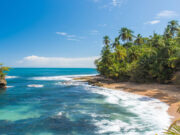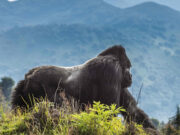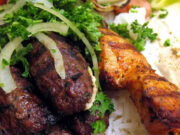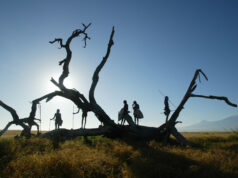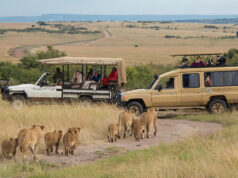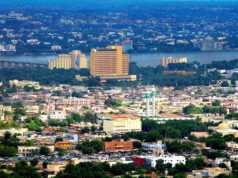Obruni. It is a Twi word meaning “outsider,” “foreigner,” me. It is commonly used in Ghana and while it does not carry a negative connotation, it definitely reminds you you’re not from these parts. I most certainly was not. Being a six-foot tall California kid made me stand out in a country where there were still people who hadn’t encountered a white person before. As I set foot out of Kotoka International Airport, I realized very quickly what it meant to be an Obruni.
Everything I had read and heard about Ghana could not really prepare me for the reality of it. There were unfamiliar noises, hand gestures, the unique use of car horns as turn signals, and above all the red dirt that made things look so surreal from my perspective. Even Ghanaian English sounded like a foreign language to me. Especially since it escaped the lips of the crowd of men offering to carry my bags for “small money.” I couldn’t feel further from home.
I had traveled to Ghana for several reasons. It offered me a chance to practice photojournalism outside of Eugene, Oregon (a town that, because of it’s university’s robust journalism school, had been mined of almost every decent story imaginable). Ghana also gave me a chance to submerse myself into a culture completely foreign to me, which would feed my travel obsession.
Ghana is often referred to as “Africa for beginners.” I never really understood that reference. Like I was going to dip my toes into the African experience in Ghana, then swim in the shallow end that is Ethiopia and finally dive head-first into the deep end of Sudan or some such nonsense. However, my experiences with various elements of Ghanaian culture were more akin to being thrown into the deep end of the ocean than dipping a toe into the shallow end of a pool. As a master’s student at the School of Journalism and Communication at the University of Oregon, my last assignment was to intern as a photojournalist for the Daily Guide newspaper in Accra, Ghana.
Since the internship program was sponsored by the university, several undergraduate companions shared a large house with me near the University of Ghana. We were a little concerned about what the living conditions would be like, but things were much nicer than I had expected. The house was in good repair, it was in a small complex with a wall and security guard and had a graded dirt road that connected with one of the main roads into Accra. A street to the east of us had plenty of stalls where we could buy necessities. A western-style mall was only a short taxi ride away if we were craving a shopping experience closer to what we were used to.
The only major differences I noticed about our living arrangement early on was the lack of hot water, laundry machines and the fact that our cooking fuel came from a small propane bottle on the back porch. Luckily the cold showers were easy to adapt to as the humidity was intense. Adapting to a new laundry routine took a little more effort. Washing each piece by hand in the sink took much longer and had to be added into the daily schedule. To save extra time and frustration, I decided to avoid the propane tank and the kitchen and try local food from nearby vendors.
Our first days were marked by a tour of the city, meeting our new co-workers and learning the best ways to get around Accra. Accra was this mix of old-world open markets and new modern construction. A brand new highway had been built with American assistance. A KFC and shopping mall stood only a kilometer from an open air market and mini-bus hub. Compact streets dating back to the colonial era were clogged with people. My favorite part was by far the neighborhood of Nima, where the offices of the Daily Guide were located. It was one of the poorer neighborhoods in Accra and one of the busiest. Chinese and American investment had made Accra’s downtown a fairly modern area, but in Nima I was able to see what Accra looked like before foreign dollars poured in. The neighborhood also had a diversity of cultures, including muslim families from the North as well as those who kept strong ties to Ashanti and Ghan traditions. These were just a few of the micro-cultures in Ghana, but I wound up meeting many individuals from other cultural groups that call Ghana home.
People often forget most African nations’ borders were arbitrarily drawn by European leaders when they descended on the continent to exploit its resources. The indigenous cultures of the Gold Coast are arranged more by climate bands going south from the ocean, through a lush central zone then to the arid northern regions. But the borders drawn up by the colonials cut the coast up in sections going east to west. This meant that ancient empires like the Ashanti were divided by relatively new borders and the existing cultural groups were forced to mingle with each other.
These cultures were all thriving just outside my window at the Daily Guide and I was chomping at the bit to go out and learn more about them. The fact is the whole experience of working in Ghana left quite an impression on me and I could probably write a small book about it. But since I am a photographer, and happen to be the co-owner of Immersion Travel Magazine LLC, I thought it would be best to share all of it in a new series of articles. I hope you enjoy following me through these exciting, humbling and unforgettable experiences as well as the photos that came out of it.



